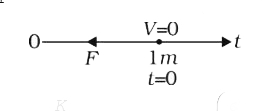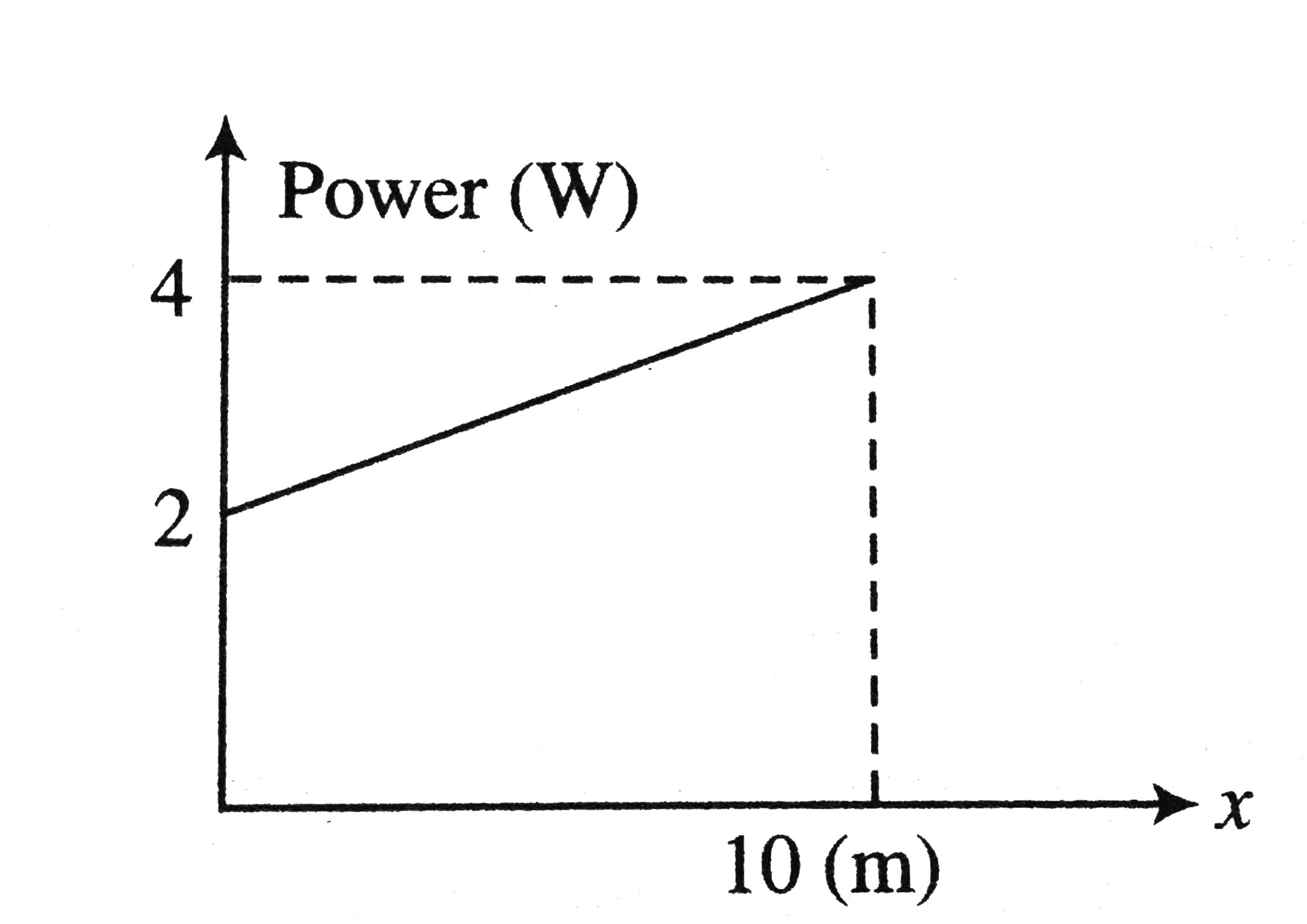A particle of mass 10−2kg is moving along the positive x axis under the influence of a force F(x)=−K/(2x2) where K=10−2Nm2. At time t=0 it is at x=1.0m and its velocity is v=0.
(a) Find its velocity when it reaches x=0.50m.
(b) Find the time at which it reaches x=0.25m.
The correct Answer is:(i) -1m/s (ii) (π3+√34)s
(i) -1m/s (ii) (x3+√34)s
The particle of mass (m=10−2kg) is moving along positive x-axis

(i) F(x)=−K2x2 or mv(dvdx)=−K2x2
Now integrating both side, m∫v0vdv=−∫x1K2x2dx
or mυ22=[K2x]x1=K2(1x−1)
or v2=Km(1x−1) or V=√Km(1x−1)
When x = 0.5 m, v=√km(10.5−1)=√km=√10−210−2=±1
As the force is acting along negative x-direction, therefore, the velocity will be in -x direction. Hence v = - 1m/s and →v=−1im/s
(ii) As km=1m/s, hence from (1) V=dxdt=−√1−xx [we have chosen -sign becuase velocity is in -x direction √x1−xdx=−dt ⇒∫0.251√x1−xdx=∫t0dt
Put x=sin2θ,dx=2sinθcosθdθ
So ∫π/6π/22sin2θdθ=−tcos2θ=1−2sin2θ,2sin2θ=1−cos2θ
∫π/6π/2(1−cos2θ)dθ=−t [θ−sin2θ2]π/6π/2=−t
(π6−12sin(π)3)−(π2−12sinπ)=−t ∴ t=(π3+√34)sec
Similar Questions
A particle moves along the X-axis from x=0→x=5m under the influence of a force given by F=(7−2x+3x2). Find the work done in the process.
View SolutionA particle moves along the X-axis from x=0 to x=5 m under the influence of a force given by F=7−2x+3x2. Find the work done in the process.
View Solution
Knowledge Check
A particle moves along the X-axis x=0 to x=5 m under the influence of a force given by F=10−2x+3x2. Work done in the process is
A70 unitsB270 unitsC35 unitsD150 unitsA particle moves along X-axis from x=0 to x=1 m under the influence of a force given by F=3x2+2x−10. Work done in the process is
A+4JB−4JC+8JD−8JA particle A of mass 10/7kg is moving in the positive direction of x−aξs. At initial position x=0, its velocity is 1ms−1, then its velocity at x=10m is (use the graph given)
 A(a) 4ms−1B(b) 2ms−1C(c) 3√2ms−1D(d) 1003ms−1
A(a) 4ms−1B(b) 2ms−1C(c) 3√2ms−1D(d) 1003ms−1
A particle moves along x-axis from x=0 to x=2 m under the influence of a force F (in N) given by F=3x2+2x−5. Calculate the work done
View SolutionA particle starts moving along the x-axis from t=0, its position varying with time as x=2t3−3t2+1.
a. At what time instants is its velocity zero?
b. What is the velocity when it passes through the origin?
View SolutionA particle moves along the x-axis from x=0 to x=5m under the influence of a given by
F=7−2x+3x2. The instantaneous power applied to the particle is.
View SolutionA body of mass m, moving along the positive x direction is subjected to a resistive force F=Kv2 (where K is a constant and v the particle n velocity). If m=10kgv=10m/s at t=0, and K=2N(m/s)−2 the velocity when t=2s is:
View SolutionA particle is moving along the x-axis with an acceleration a = 2x where a is in ms–2andx is in metre. If the particle starts from rest at x=1 m, find its velocity when it reaches the position x = 3.
View Solution
